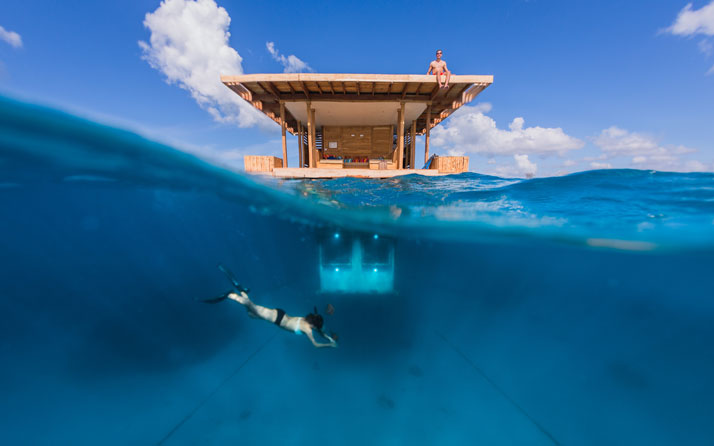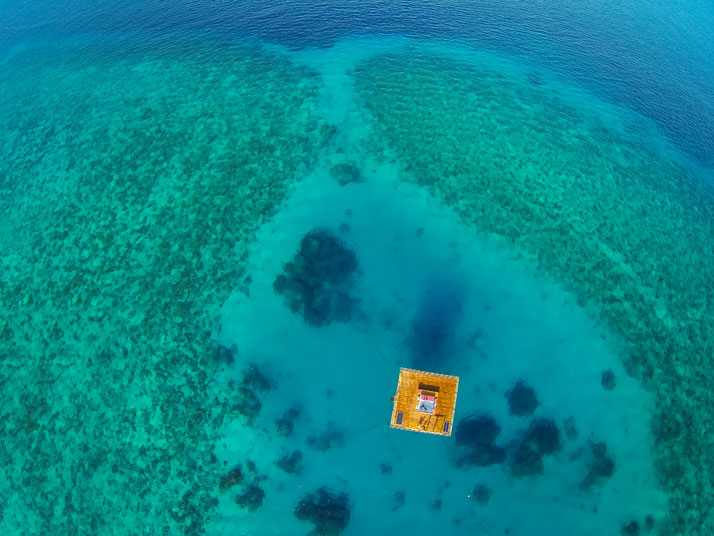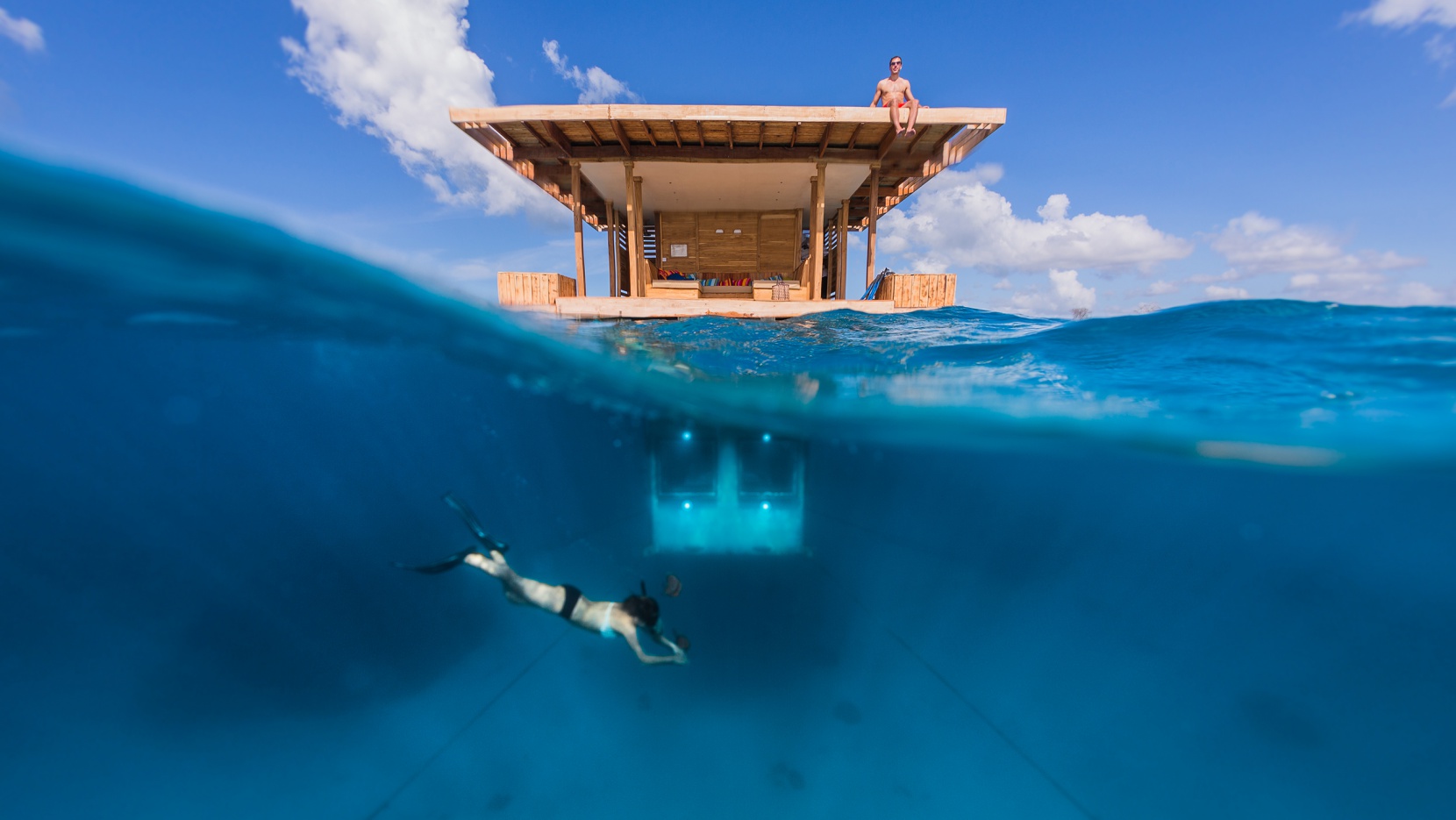We’ve all seen the out of this world images of the incredible Ithaa underwater restaurant at the Conrad Maldives Rangali Island or Huvafen Fushi’s heavenly underwater spa. Indeed, we’ve all seen or maybe stayed in a room in the Maldives with a glass floor that overlooks the marine bed below. In fact, accommodations with glass ceilings for a night under the stars or glass walls offering incredible vistas of Mother Nature are gradually taking vacation experiences to new heights all over the world. The Manta Resort’s recently opened Underwater Room however, is in a league of its own. Located in the Indian Ocean just off the coast of
Tanzanian, this floating glass cube allows guests to be completely immersed in the ocean where amongst the multitude of fish species that swim by, the star of the show is the manta ray.

The project was originally conceived quite a fair distance from the exotic waters of the Indian Ocean, thousands of kilometers north of it to be exact, in Stockholm, Sweden, when in 2000, artist Mikael Genberg decided to work on a project that would make art more accessible. He created the ‘Utter Inn’ (‘Otter Inn’ in English), a single room that lies three meters below the surface of Lake Mälaren in Västerås. Operating like a human-size aquarium, the accommodations allows guests to spend an extended period of time deep within a marine environment and for the fish to behold human beings as though they themselves were in an aquarium - thus reversing the roles. Six years later, in 2006, Genberg Underwater Hotels was founded (Genberg’s aim is to create a series of original underwater rooms). The first opened in November 2013 on the idyllic
Tanzanian island of
Pemba and based on the ‘Utter Inn’, is the latest addition to the Manta Resort’s existing 16 rooms.

Easily accessible from the Manta Resort, the Underwater Room is completely self-contained, and is divided into two parts, the underwater and the two-floor wooden deck above water level. The bedroom underwater is accessed only via a ladder leading down below the water’s surface. Featuring a comfortable double bed, it provides the perfect platform for watching life go by so close to the seabed. The hardwood deck above is equipped with toilets and a lounging area. Guests can sleep underwater, or under the stars if they choose to; rocked to sleep by the gentle lapping of the ocean. Looking up into the skies a whole other canvas than the one we’re used to, is revealed; completely free of light pollution, the Zanzibar archipelago guarantees a crystal clear blanket of stars every night. Spotlights placed underneath each windowpane below sea level light up the room’s immediate surroundings, creating a surreal luminous view of the marine life around it which is attracted by the light source whereby the creatures swimming past almost appear to be glowing.

Due to the room being situated in a clearing, known as the Blue Hole, in the coral reef measuring some 12 metres deep, guests also have the opportunity to see a more relaxed side to the ocean: ''Some [reef fish] have taken up residence around the room, which affords them some protection from predators,'' reads the project website. ''For instance, three bat fish and a trumpet fish called Nick who is always swimming around and seemingly looking in!''
Completely isolated and utterly compelling, the experience allows guests to delve deeper into a marine world than any diving experience, to really live within a marine environment and to experience its unique rhythm and colours. A night in the Manta Underwater Room costs $750 per night per person
see also Pemba




Post a Comment